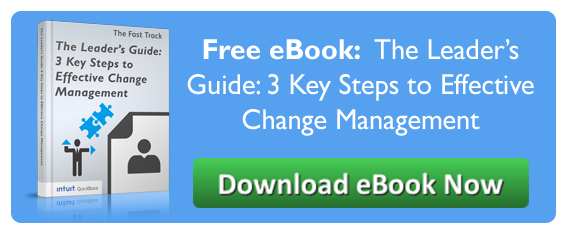 Business 2 Community
Business 2 CommunityUsing Data about Emotional Intelligence to Drive Performance

You can’t just wave a magic wand and expect your team’s personality conflicts to disappear. But if you’re John Hughes, an executive coaching and leadership development consultant, you can use a data-driven EQ (emotional quotient) assessment to diagnose and solve these problems.
So what is EQ, anyway? It’s your ability to feel and express emotions; your assertiveness levels; your stress tolerance; your flexibility; your level of empathy; your ability to do your best alone or in a team. As with IQ (intelligent quotient), EQ can be measured. But unlike IQ, which degrades as we age, EQ can be developed.
“Many of the executives and managers I work with understand the concept of emotional intelligence but needed a way to make it ‘real’ for them,” Hughes said. “They needed data.”
In order to do this, Hughes derives his results from an EQ test—he administers several hundred a year—based on the work of Dr. Reuven Bar-On, one of the leading theorists and practitioners in the emotional intelligence field. The test takes only fifteen minutes to complete yet reveals critical information about the test-taker’s emotional makeup.
Interestingly, Hughes said, certain skills match up to certain professions…and it’s not always obvious which is which. For example, most people would say that the most important emotional intelligence skill for a nurse would be empathy. But actually, the most important is problem solving—because we would rather the nurse solve our problem than express empathy.
Here are some examples of Hughes’ EQ evaluations, the results he presented to an executive or team, and a problem-solving action plan.
Example #1
Mary’s biggest problem is conflict avoidance. Her leadership style is reflected in her team: They can identify a conflict, but they can’t resolve it.
“In her EQ, she scored low in self-regard, assertiveness, and stress tolerance,” Hughes said. “So my job is to look at these three low scores and [ask], ‘Is there a story here?’”
There was. Mary had been very successful at similar positions in other companies and had been in this job only six months. She was expected to take immediate ownership of her team. The missing piece: She had not been given a sure footing in the culture and orientation of the company or help in building a network. She was simply expected to produce, based on her successes in previous similar roles in other companies. Her assertiveness was low because she didn’t have a voice, Hughes said.
The solution: Mary came up with her own orientation plan with her manager, giving herself ninety days to acclimate to the culture. They also realized that she needed clarification of the overall company strategy, another missing piece.
“Ninety days later, everybody’s happy,” Hughes said. “Of course, this is just the beginning of the relationship, but it’s a great outcome.”
Example #2
Brian prides himself on his honesty. This honesty tends to come out in high levels of assertiveness: He loves to put his voice out there.
This is often accompanied by a high degree of “reality testing,” manifested in a lot of questioning—sometimes rapid-fire questions, asked even before an answer is delivered. In Brian, this was paired with a low degree of impulse control. Therefore in meetings, Brian was perceived as not collegial.
During the debriefing, Hughes told Brian, “Sometimes anger is at the heart of a lack of impulse control.
“As the team facilitator, I had to point out to Brian that his tone was shutting people down—it even shut me down,” Hughes said. “I told him, ‘You come across as angry. You frame as honesty, I frame it as anger—the emotion that’s driving your honesty is anger.
“Then I asked, ‘Is there anything about your anger that you want to share with the group?” It turned out that in joining the company, the position that he was supposed to get had been eliminated. He felt he was doing work that was below him, and he was upset.
“I said, ‘Brian that sucks, but the whole team is suffering. You have to find a way to deal with it, or leave the company.’”
Example #3
The boss, Lou, is a senior business leader who had a reputation for being intelligent, hardworking, and loyal. But his leadership style had changed, and he delivered rude responses, belittled his team, was viewed as inflexible and aggressive, even unapproachable and angry. Other bad boss behaviors included favoritism, frequent and ineffective team meetings, and a stressed and conflict-ridden relationships with peers.
But Lou has high assertiveness, high empathy, and high emotional self-awareness – so, Hughes said, when he shouts at people he knows he’s hurting them.
With the EQ assessment, Hughes said to Lou, “You know you’re sticking the knife into your team members every day. Your empathy tells me you don’t care. Unless you put your knife away, terrible things will happen.”
It turned out, Hughes said, that Lou’s personal life had taken a nasty turn. Ultimately, he had to go for external counseling.
Hughes planned to work with him and his direct reports to make sure that Lou stepped up to the behavior change he committed to.
As Hughes reminds us, “The company doesn’t pay you to be happy, it pays you to be effective.” Finding a weak spot in your stakeholders’ EQs, and working to improve it, can help you and your team function as effectively as possible.
This article was syndicated from Business 2 Community: Using Data about Emotional Intelligence to Drive Performance
More Business & Finance articles from Business 2 Community:

